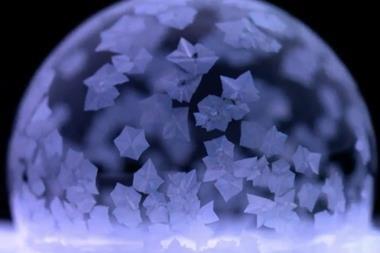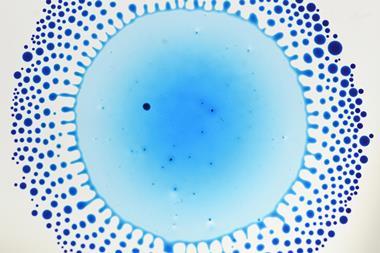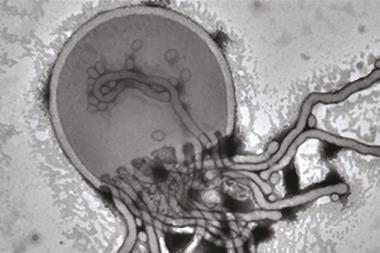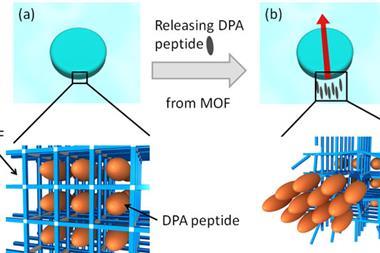At first, the tiny oil droplet suspended in an ethanol–water mixture bounces progressively higher. But after 26 jumps, taking place over half an hour, the bouncing suddenly ends. Scientists have now found out what’s behind the droplet’s strange behaviour and sudden death.
Under the right circumstances, droplets self-propel when immersed in another liquid. This seemingly odd behaviour is driven by the Marangoni effect, which is also responsible for the ‘tears’ or ‘legs’ seen in wine with a high alcohol content. The effect is caused by a surface tension difference between two fluids, which can be generated by temperature variations, chemical reactions or – as in this case – a solute gradient. Scientists led by Xuehua Zhang from the University of Alberta, Canada, and Detlef Lohse at the University of Twente, Netherlands, uncovered another surprising consequence of the Marangoni effect: it makes droplets bounce inside a liquid.
To study the effect the researchers suspended a small amount of anethole in a vial containing ethanol carefully layered on top of water to create a vertical density gradient. First, the anethole droplet – which is denser than ethanol but lighter than water – slowly sinks through the liquid. But after about a minute, it jumps by about four times its diameter within one second. After another 25 such bounces, each slightly higher than the previous one, the droplet suddenly sinks to the bottom of the vial.
By visualising the flow around the droplet, the team found a delicate balance between Marangoni flow and buoyancy. Gravity pulls the droplet downwards into an area of similar density. As it sinks, surface energy builds up above it, triggering a sudden jump. The droplet sinks again, though a little lower this time.
With each cycle, the Marangoni stress decreases, possibly due to the mixing caused by the jumping motion. After a while, the lifting force can’t overcome buoyancy and the droplet drops dead. The effect isn’t exclusive to anethole. The same thing happens with other types of oils too – such as silicon oil – suspended in liquids with a density gradient.
References
Y Li et al, Phys. Rev. Lett., 2019, 122, 154502 (DOI: 10.1103/PhysRevLett.122.154502)

















No comments yet